
Lifting and material handling equipment company Terex (NYSE:TEX) reported Q4 CY2024 results topping the market’s revenue expectations, with sales up 1.5% year on year to $1.24 billion. The company expects the full year’s revenue to be around $5.4 billion, close to analysts’ estimates. Its GAAP loss of $0.03 per share was significantly below analysts’ consensus estimates.
Is now the time to buy Terex? Find out by accessing our full research report, it’s free.
Terex (TEX) Q4 CY2024 Highlights:
- Revenue: $1.24 billion vs analyst estimates of $1.23 billion (1.5% year-on-year growth, 0.8% beat)
- EPS (GAAP): -$0.03 vs analyst estimates of $0.72 (significant miss)
- Adjusted EBITDA: $114 million vs analyst estimates of $122.9 million (9.2% margin, 7.2% miss)
- Management’s revenue guidance for the upcoming financial year 2025 is $5.4 billion at the midpoint, in line with analyst expectations and implying 5.3% growth (vs -0.4% in FY2024)
- EPS (GAAP) guidance for the upcoming financial year 2025 is $4.90 at the midpoint, missing analyst estimates by 2.3%
- EBITDA guidance for the upcoming financial year 2025 is $660 million at the midpoint, below analyst estimates of $691.7 million
- Operating Margin: 4.3%, down from 9.5% in the same quarter last year
- Free Cash Flow Margin: 10.3%, similar to the same quarter last year
- Market Capitalization: $3.21 billion
Company Overview
With humble beginnings as a dump truck company, Terex (NYSE:TEX) today manufactures lifting and material handling equipment designed to move and hoist heavy goods and materials.
Construction Machinery
Automation that increases efficiencies and connected equipment that collects analyzable data have been trending, creating new sales opportunities for construction machinery companies. On the other hand, construction machinery companies are at the whim of economic cycles. Interest rates, for example, can greatly impact the commercial and residential construction that drives demand for these companies’ offerings.
Sales Growth
A company’s long-term sales performance can indicate its overall quality. Any business can put up a good quarter or two, but many enduring ones grow for years. Over the last five years, Terex grew its sales at a sluggish 3.3% compounded annual growth rate. This fell short of our benchmark for the industrials sector, but there are still things to like about Terex.
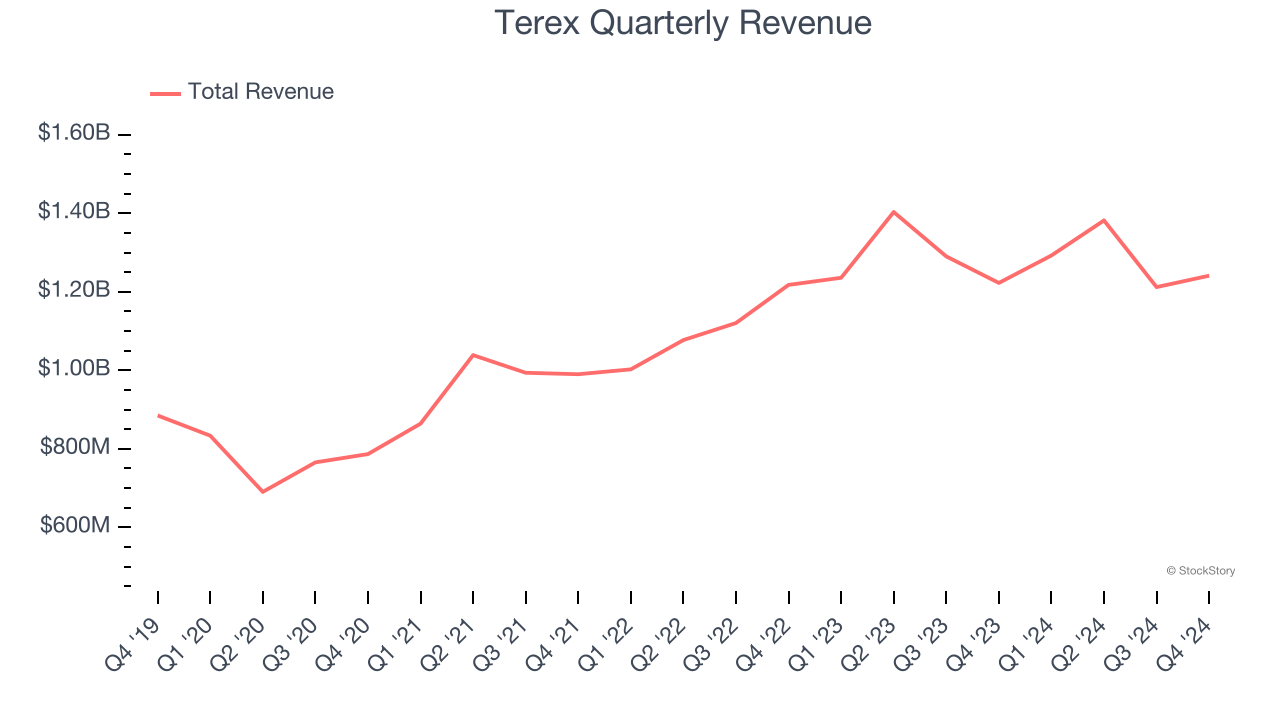
Long-term growth is the most important, but within industrials, a half-decade historical view may miss new industry trends or demand cycles. Terex’s annualized revenue growth of 7.7% over the last two years is above its five-year trend, suggesting some bright spots. 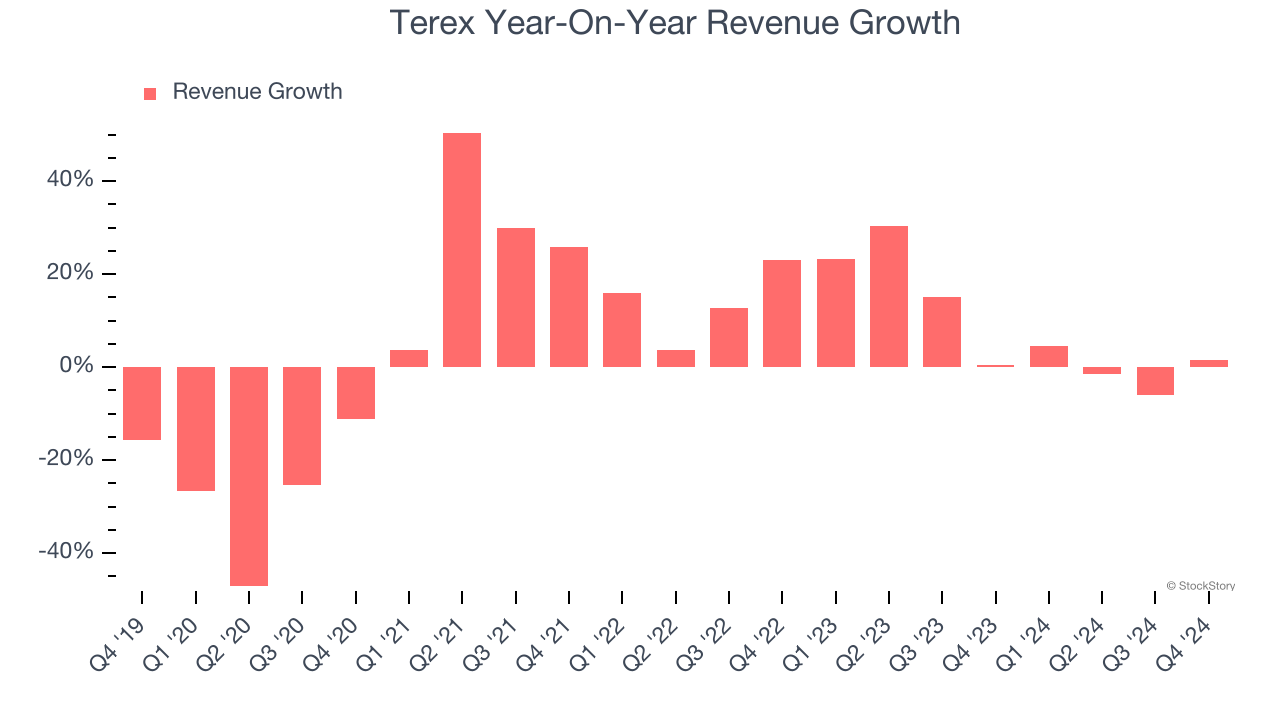
This quarter, Terex reported modest year-on-year revenue growth of 1.5% but beat Wall Street’s estimates by 0.8%.
Looking ahead, sell-side analysts expect revenue to grow 4% over the next 12 months, a deceleration versus the last two years. This projection doesn't excite us and implies its products and services will face some demand challenges. At least the company is tracking well in other measures of financial health.
Today’s young investors won’t have read the timeless lessons in Gorilla Game: Picking Winners In High Technology because it was written more than 20 years ago when Microsoft and Apple were first establishing their supremacy. But if we apply the same principles, then enterprise software stocks leveraging their own generative AI capabilities may well be the Gorillas of the future. So, in that spirit, we are excited to present our Special Free Report on a profitable, fast-growing enterprise software stock that is already riding the automation wave and looking to catch the generative AI next.
Operating Margin
Terex has done a decent job managing its cost base over the last five years. The company has produced an average operating margin of 9.1%, higher than the broader industrials sector.
Looking at the trend in its profitability, Terex’s operating margin rose by 8 percentage points over the last five years, showing its efficiency has meaningfully improved.
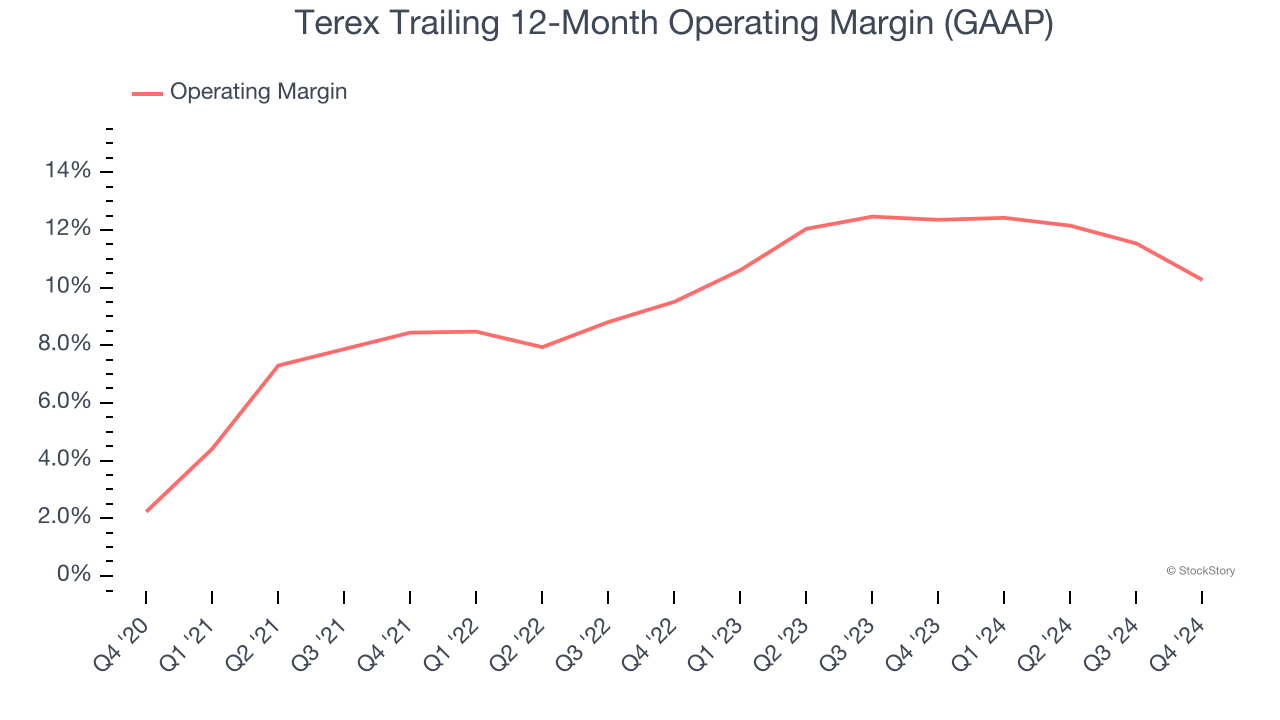
In Q4, Terex generated an operating profit margin of 4.3%, down 5.2 percentage points year on year. Since Terex’s gross margin decreased more than its operating margin, we can assume its recent inefficiencies were driven more by weaker leverage on its cost of sales rather than increased marketing, R&D, and administrative overhead expenses.
Earnings Per Share
Revenue trends explain a company’s historical growth, but the long-term change in earnings per share (EPS) points to the profitability of that growth – for example, a company could inflate its sales through excessive spending on advertising and promotions.
Terex’s EPS grew at an astounding 49% compounded annual growth rate over the last five years, higher than its 3.3% annualized revenue growth. This tells us the company became more profitable on a per-share basis as it expanded.
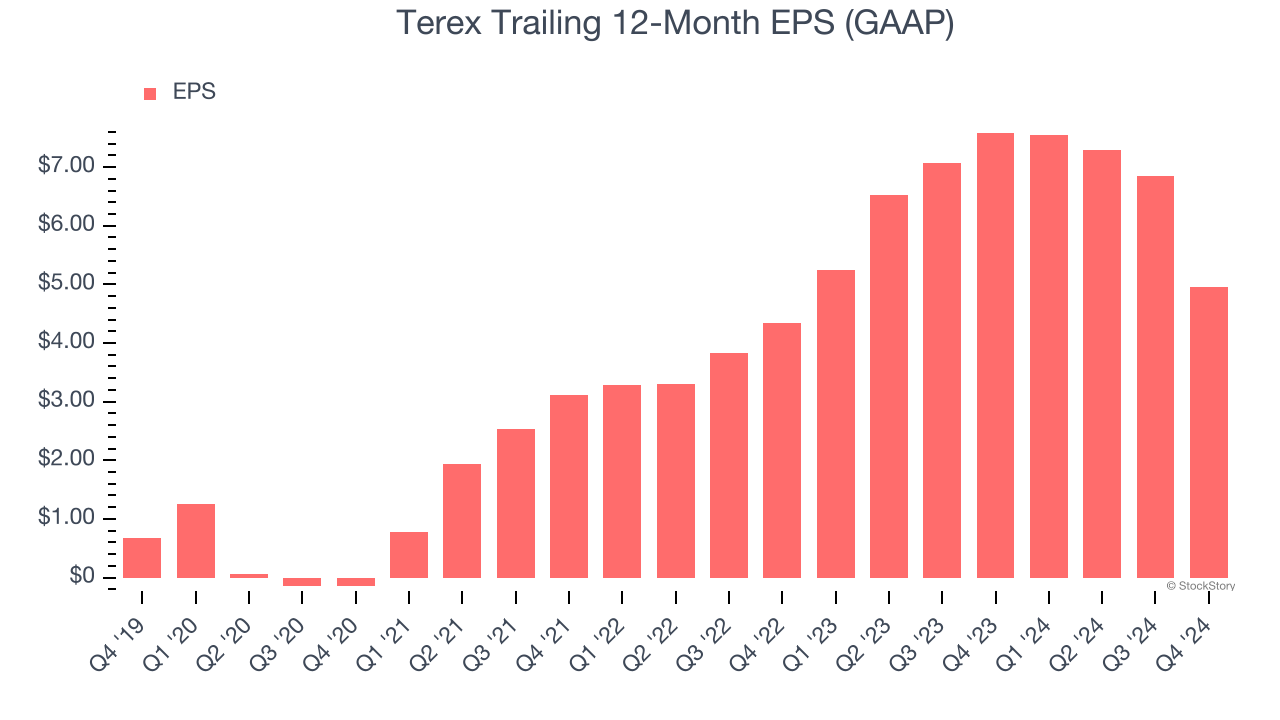
We can take a deeper look into Terex’s earnings to better understand the drivers of its performance. As we mentioned earlier, Terex’s operating margin declined this quarter but expanded by 8 percentage points over the last five years. Its share count also shrank by 6.4%, and these factors together are positive signs for shareholders because improving profitability and share buybacks turbocharge EPS growth relative to revenue growth. 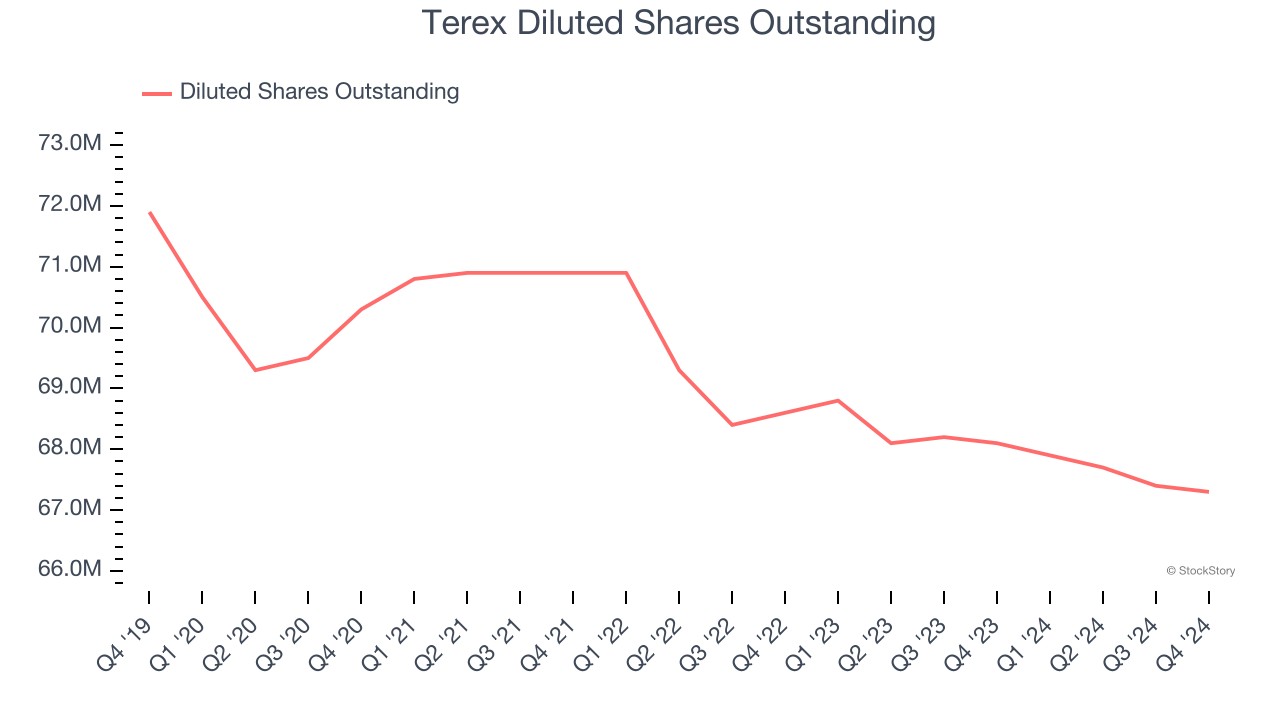
Like with revenue, we analyze EPS over a shorter period to see if we are missing a change in the business.
For Terex, its two-year annual EPS growth of 6.8% was lower than its five-year trend. This wasn’t great, but at least the company was successful in other measures of financial health.
In Q4, Terex reported EPS at negative $0.03, down from $1.86 in the same quarter last year. This print missed analysts’ estimates, but we care more about long-term EPS growth than short-term movements. Over the next 12 months, Wall Street expects Terex’s full-year EPS of $4.95 to stay about the same.
Key Takeaways from Terex’s Q4 Results
It was good to see Terex narrowly top analysts’ revenue expectations this quarter. On the other hand, its full-year EBITDA guidance missed significantly and its EBITDA fell short of Wall Street’s estimates. Overall, this quarter could have been better. The stock traded down 4.1% to $46 immediately after reporting.
Terex may have had a tough quarter, but does that actually create an opportunity to invest right now? If you’re making that decision, you should consider the bigger picture of valuation, business qualities, as well as the latest earnings. We cover that in our actionable full research report which you can read here, it’s free.
